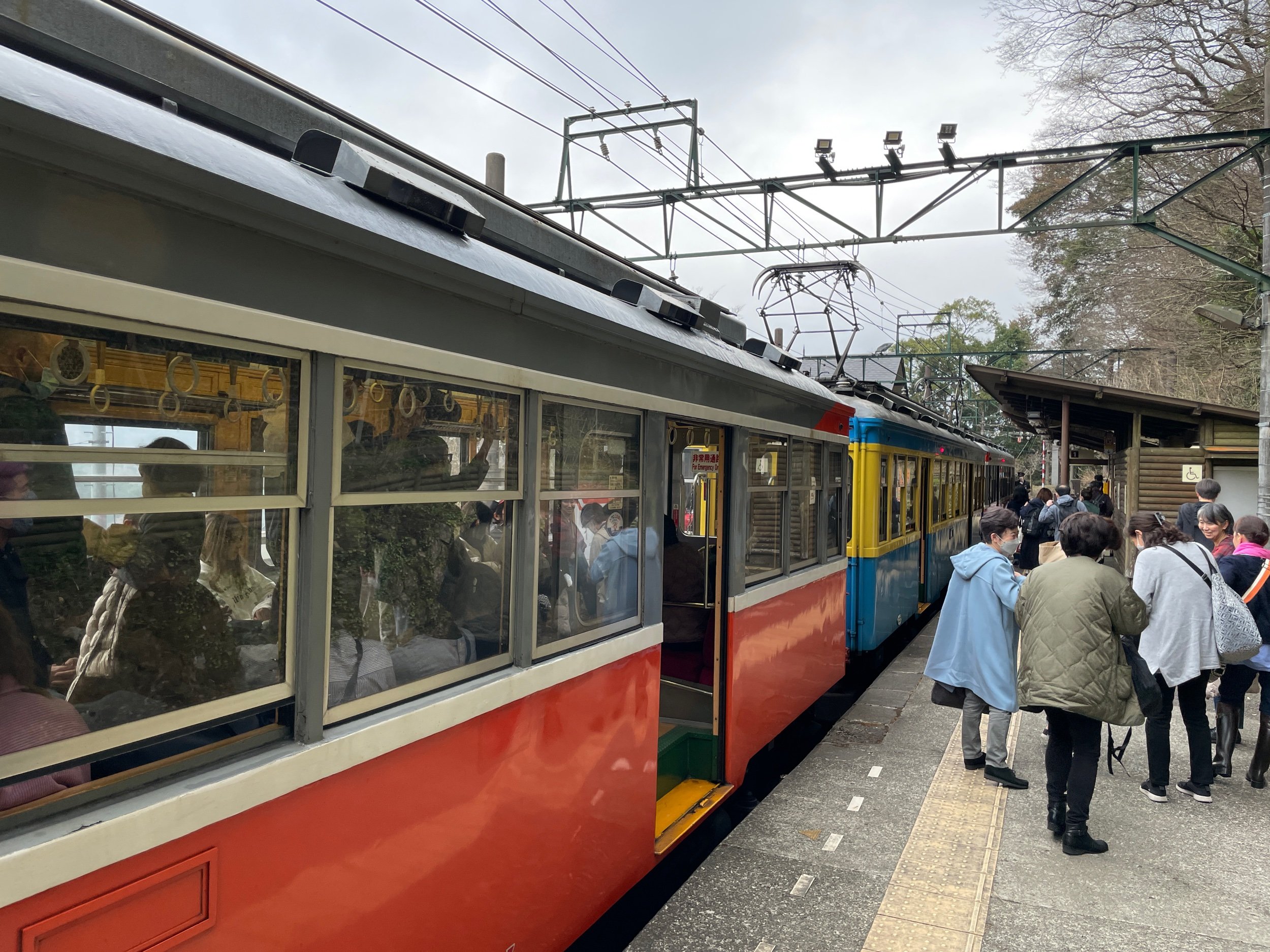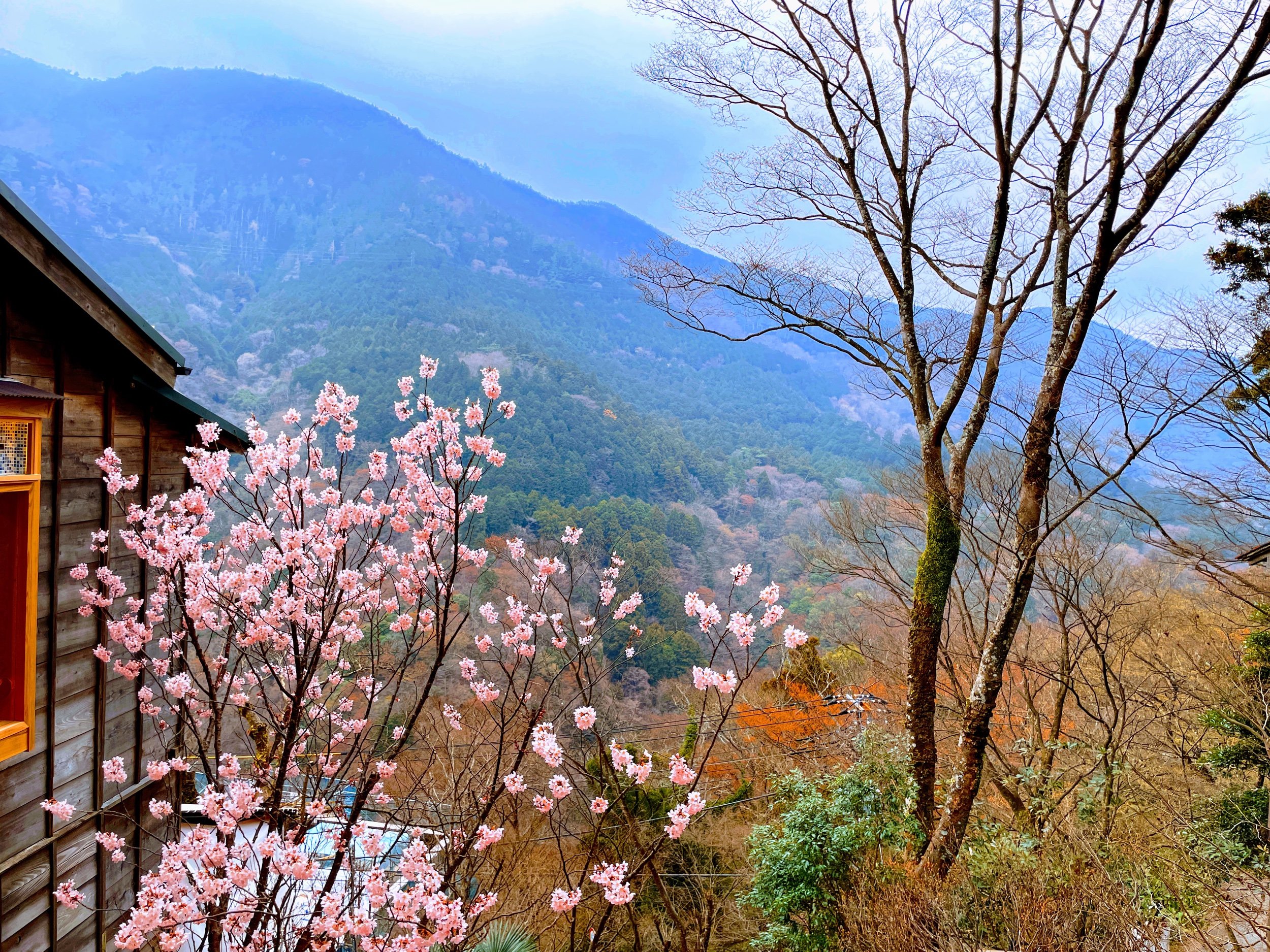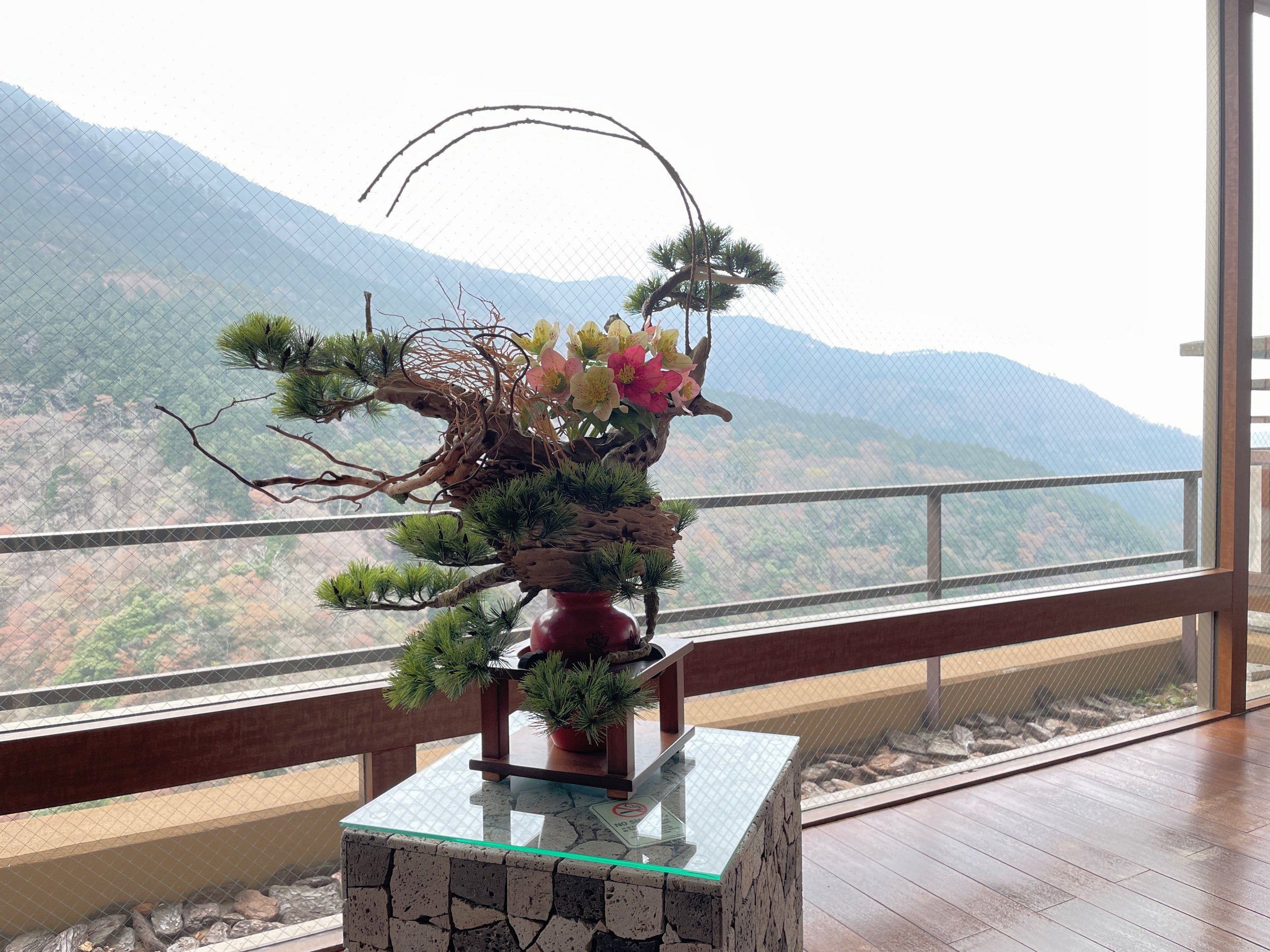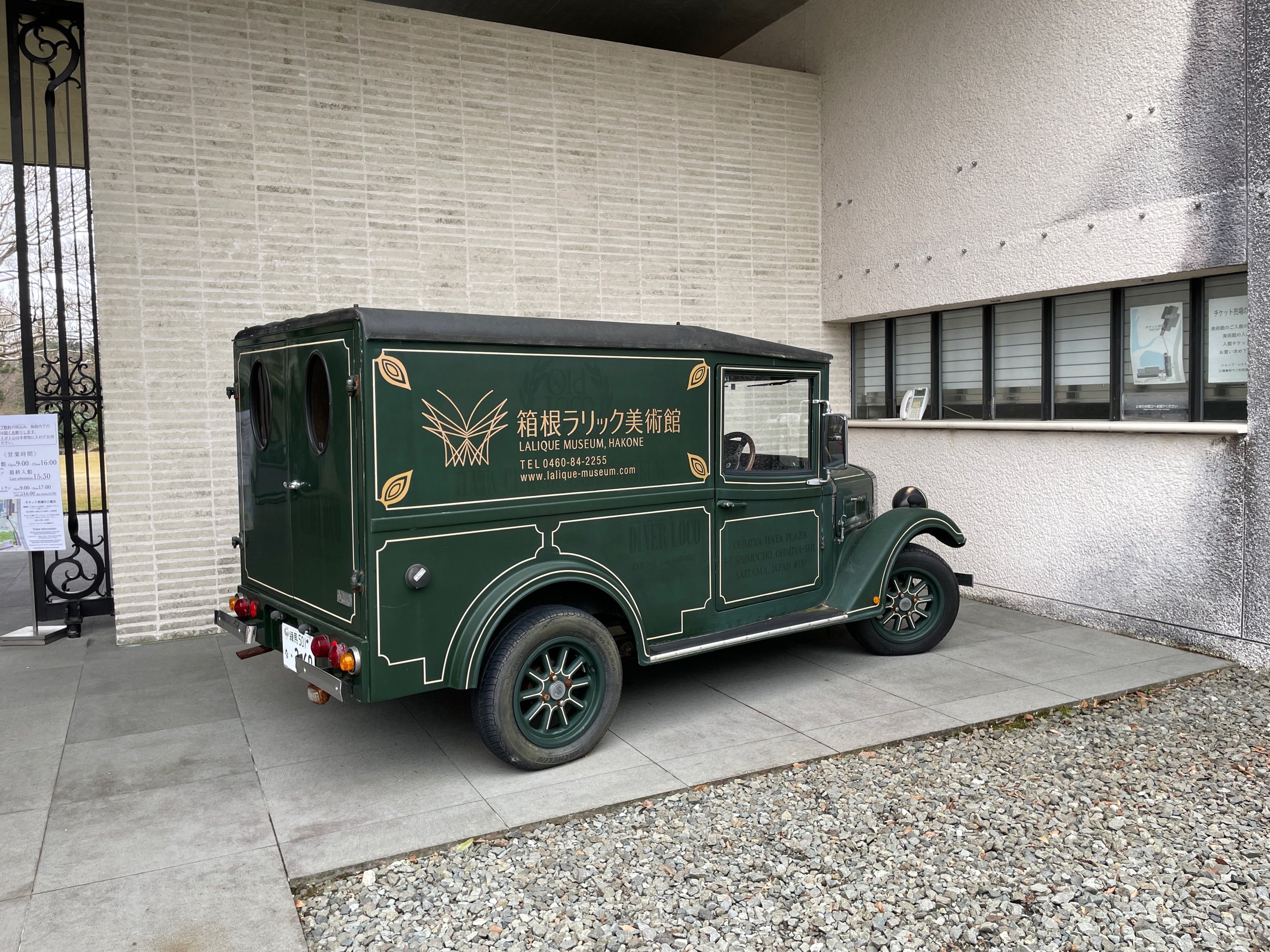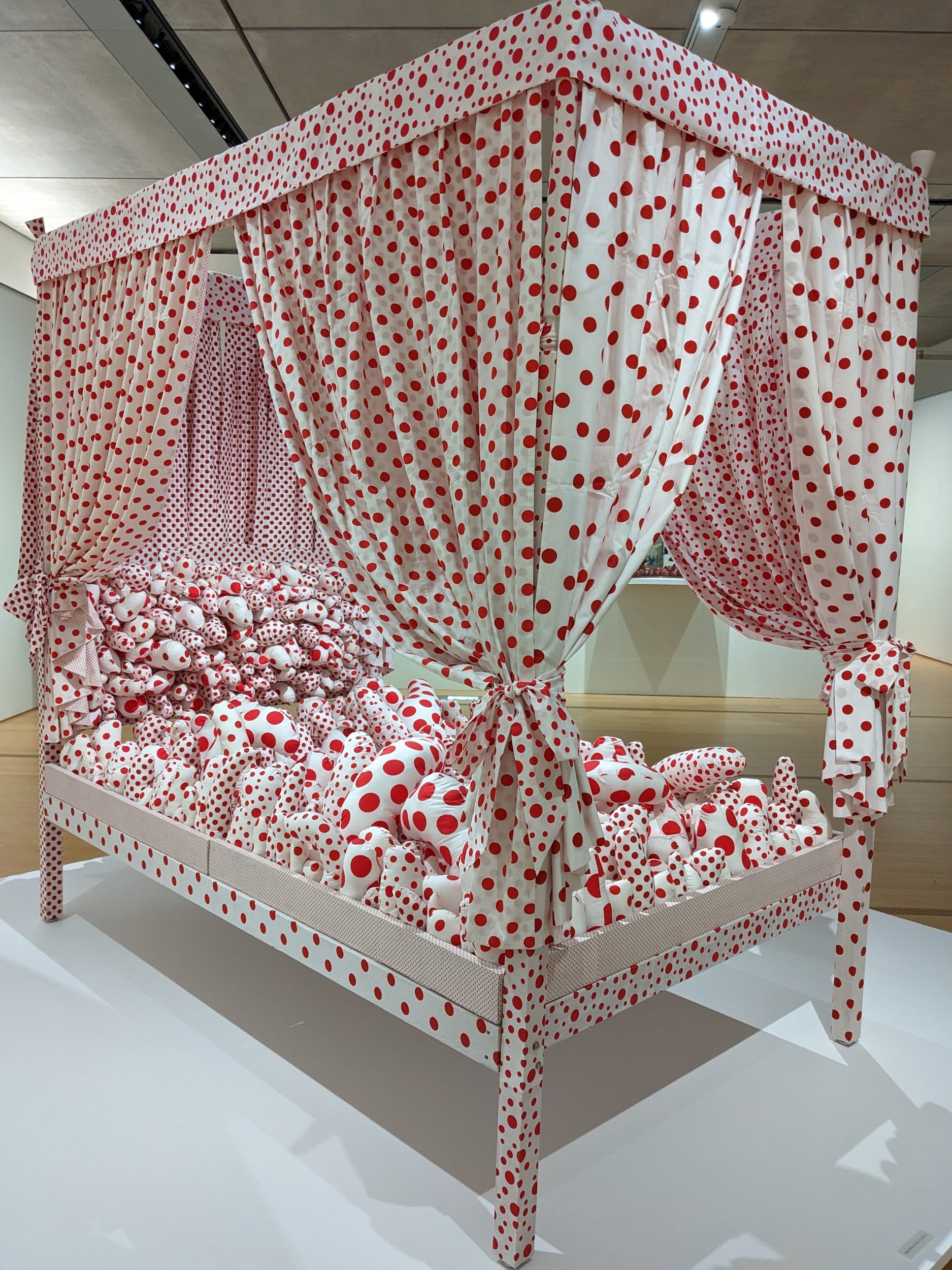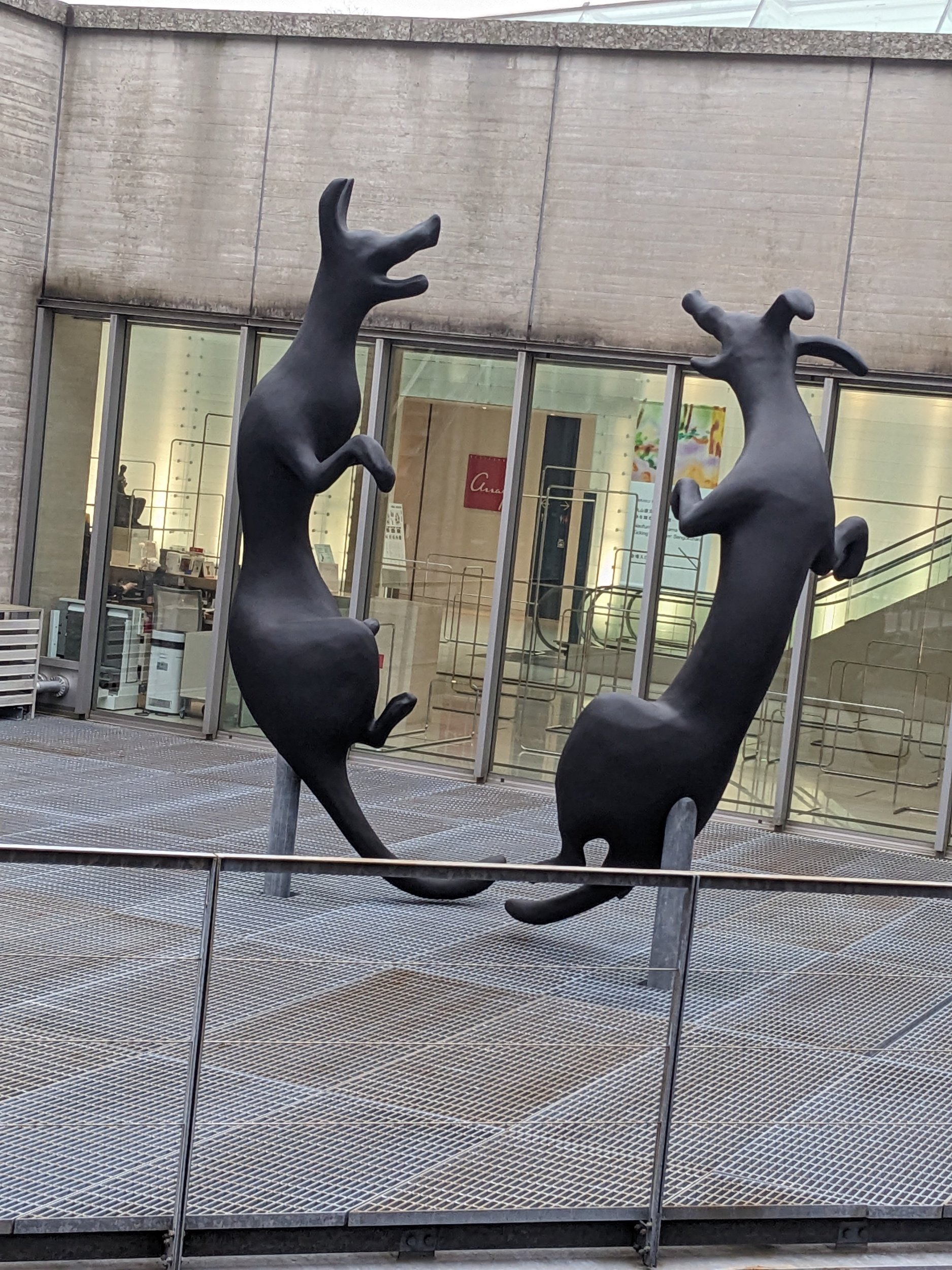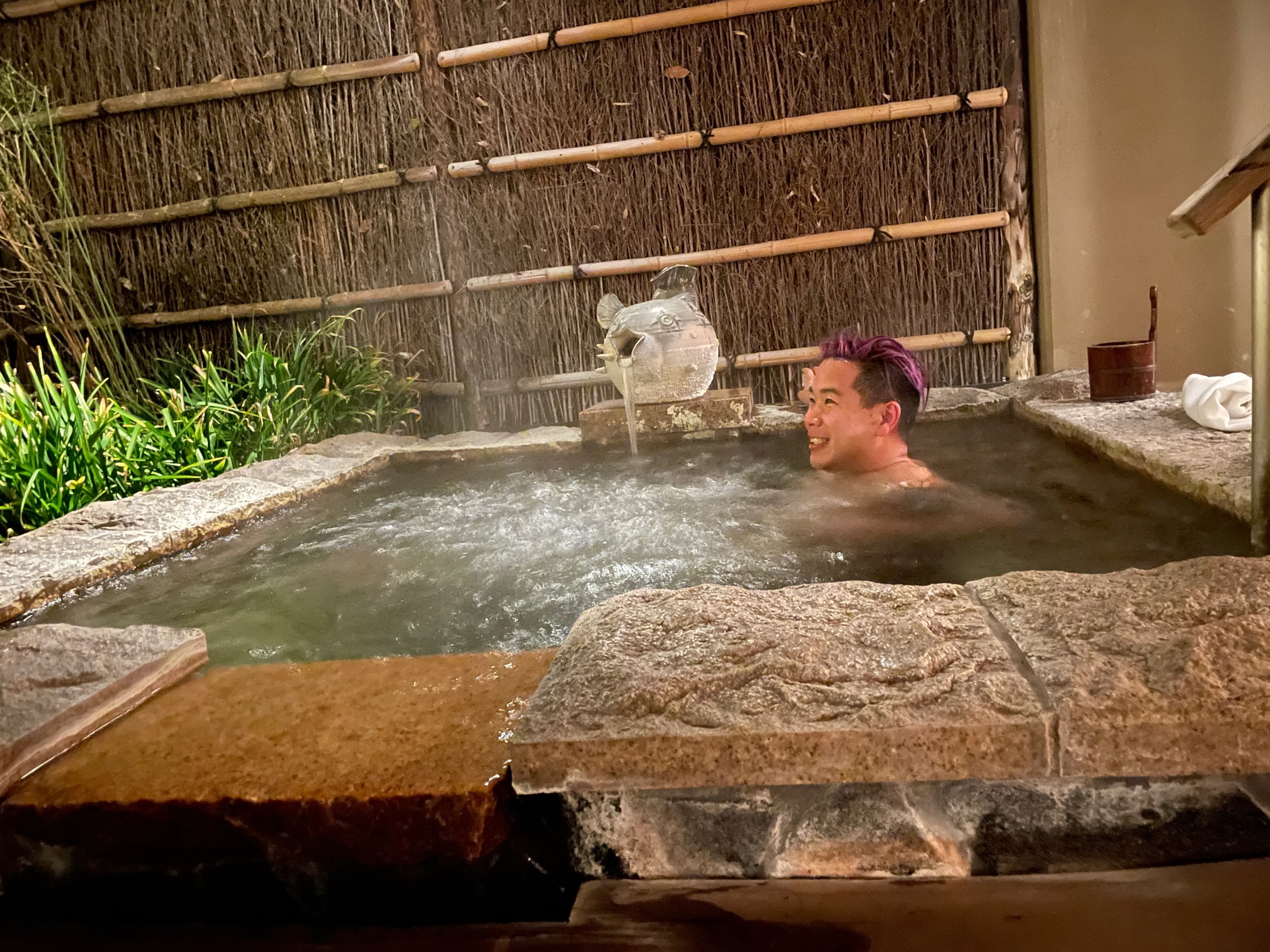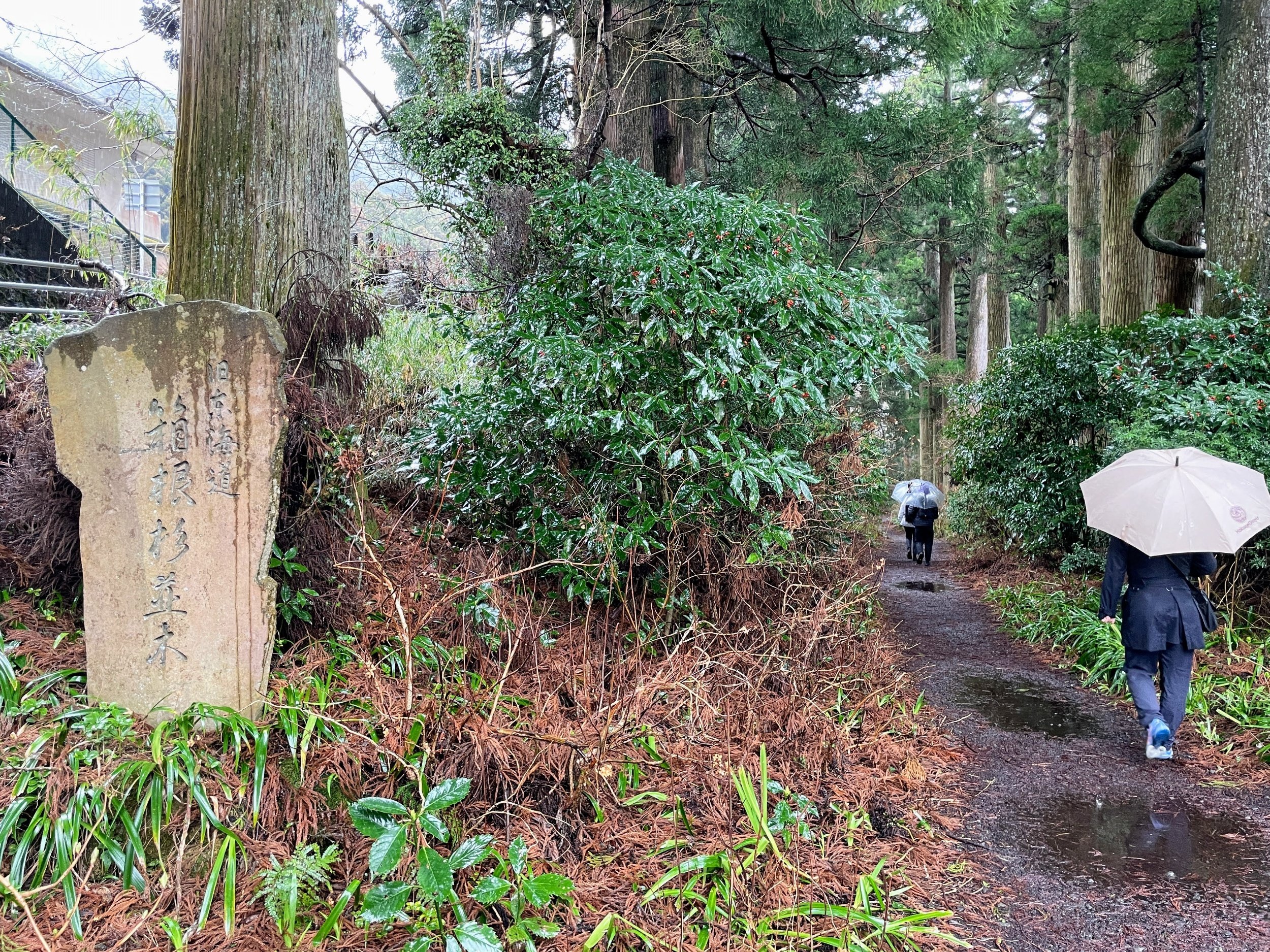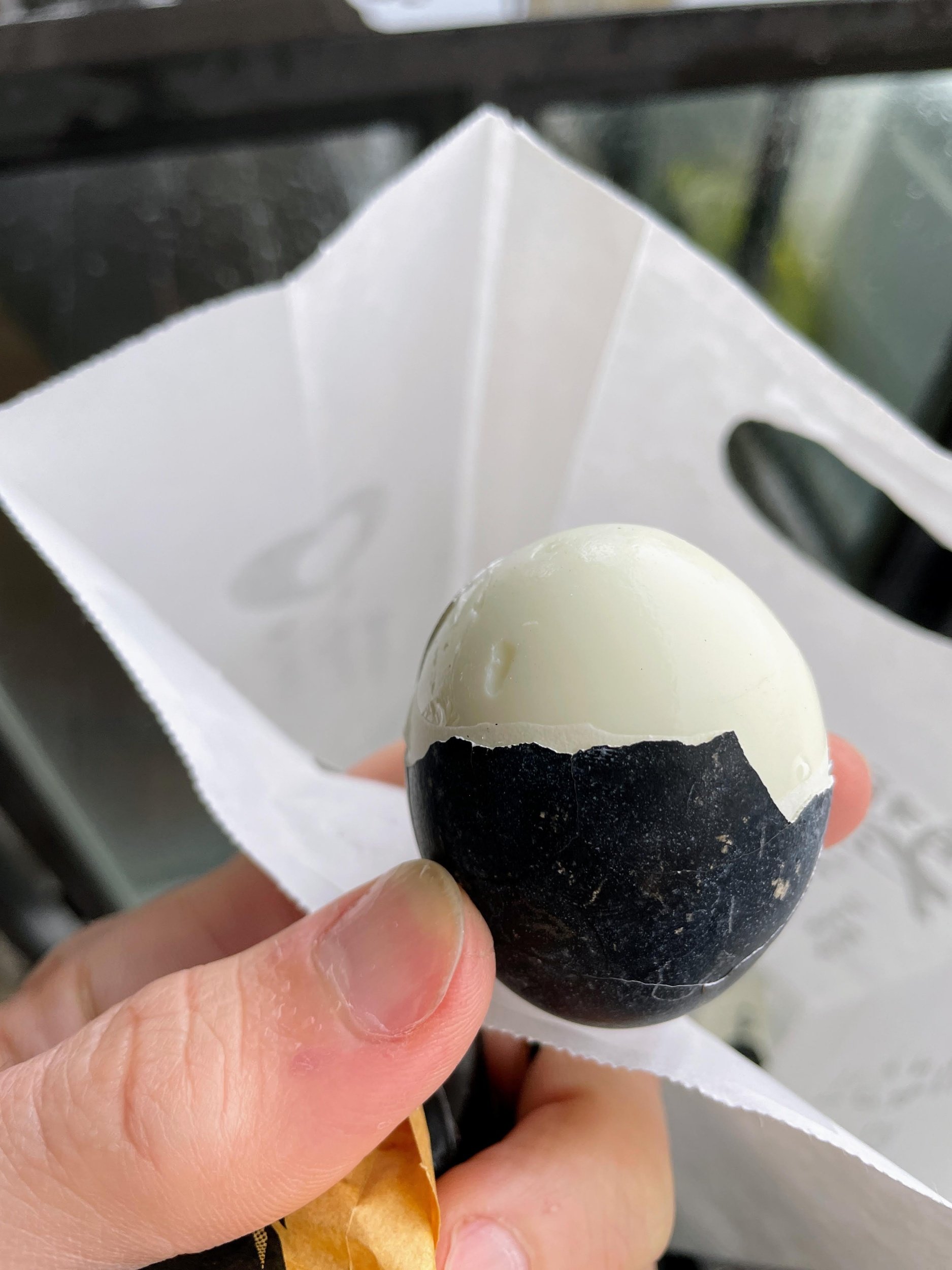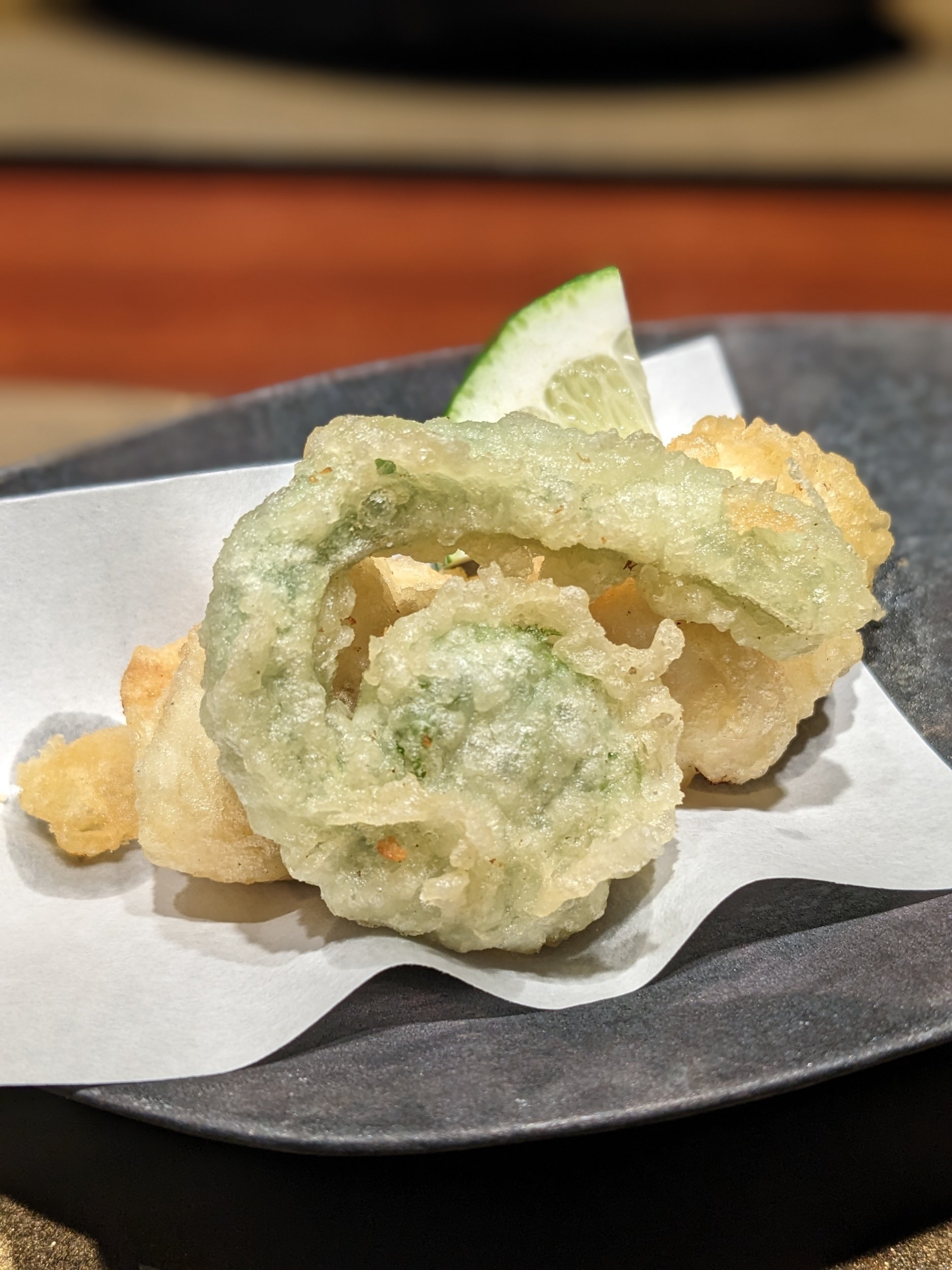Japan 2023, days 4 & 5: relaxing in Hakone
After the hustle and bustle of Tokyo right after arriving, we planned a little getaway to an onsen in the mountains of Hakone. We booked at a beautiful ryokan on the river in Miyanoshita, called Ryokan Hakone Ginyu, and I’ll tell you more about that in a minute. First, let’s talk about the ride there.
We took a super short Shinkansen from Tokyo station to Odawara, and I swear it only got up to high speed for maybe 10 minutes. We then found the vending machines for Odakyu railway to buy the Hakone free pass and managed to navigate the interface easily enough.
The train we boarded was a bit cramped and we had to stand with our luggage crammed between us, which worried me, as we were expecting a 45 minute ride.
As it turns out, the train ride is really in 2 parts. Here’s the confusing, yet linear route map:
This means we had to change trains in Hakone Yumoto, and they clearly coordinate the times, as everyone walked over there at once. We got in this beautiful old beast to climb the steep grade into the mountain:
Along the way, the train PA explained some fun facts about this journey. It involved 13 tunnels, 3 switchbacks (where the train literally reverses the direction of travel), an up-to 8% grade (second highest in the world for normal trains), and a tight turning radius (30m/100ft). To make some of the hard corners, the train driver even sprays water on the tracks to help reduce friction and wear-and-tear.
Once we got there, we had a brief walk down a steep hill from the station to get to our Ryokan, with a delightful view along the way.
As it was too early for checkin, we dropped our bags off and headed back out to grab lunch and do some afternoon exploring of the area. We had a little confusion with which bus to take and which bus stop to get it at, but managed to find our way to the Shengoku plateau higher up the hill. We found this adorable burger place for lunch:
It was pricier than what we got used to in Tokyo, but nothing crazy, and the meat quality was amazing. I mean, so far that’s been true about every piece of meat or fish we’ve had here, but it still was a pleasant surprise.
After lunch, we crossed the street to go to the Rene Lalique museum, and then discovered they don’t take credit cards (and we were low on cash). After a quick round-trip to the Lawson convenience store down the street, we were back and in. They don’t allow photographs inside, but it’s a pretty impressive collection of glass work and jewelry from the iconic French designer. And a couple old cars, outside, as well. We never figured out why it was here in Japan, but lucky for us, I guess?
We then wanted to visit the Pola museum of art, and the real bus-tastrophe happened. Google’s directions had the craziest looking route, with lots of backtracking, so we walked over to the main bus station in Sengoku and tried to figure it out from the signs. Twice, we asked bus drivers while boarding, and each one convincingly told us to take the bus stop on the other side of the street. Finally, an old Japanese man tried to help explain that one of the busses was not running today, in Japanese. Once we pieced that together, and put a little more faith in Google maps, we managed to get on the right bus (without asking the driver this time), and worked our way there. And, the aptly named bus route S is squirrely, but that’s because the bus goes out of its way to stop at the Venetian glass museum and the little prince museum. This area has weird museums.
The Pola gallery has gorgeous architecture, with the building seeming to be floating in a bowl-shaped excavation from the hillside. (There’s a few support columns down in the center of the bowl holding it all up.) The bridge that leads from the road down to the entrance itself is beautiful.
After buying our tickets (with credit card this time), we stopped in the current exhibit, called “Interior Visions.” It was inspired by COVID and focused on being inside a room.
There was also some work from some of the great European artists, heavy on impressionists. Nick joked it was some of the greatest artists, but not some of their greatest works.
Finally, we headed outside to appreciate the sculpture garden that surrounds the museum and extends down the hillside. On a nice day, you can even see the mountains from here. With the clouds, fog, and cold, that was definitely off the table for us. The sculptures were pretty neat, though we wasted an extra ten minutes backtracking to see a glass cylinder because Jerry kept seeing signs directing us to it.
As it was getting late, we headed back to the ryokan to check in. They greeted us at the door, took our shoes and bags, and helped us get settled right away with a welcome drink. The slope is so steep that the building entrance is on the 5th floor, and our room was down on the first floor so that we could have a private outside bath. After they showed us around and explained everything in the room, we settled in and took showers, then baths in the private onsen. Something about the hot, mineral-rich water is truly relaxing.
Dinner was served in our room, and the living room space was turned into a bedroom while we ate, with the traditional (well, modern foam these days) futon mattresses were rolled out on the floor. The multi-course kaiseki dinner was amazing:
We relaxed for the rest of the evening, and woke up early again (still struggling to stay asleep until 7am). They delivered a breakfast that completely filled the table in our room. Jerry got the Japanese option, while Nick kept it “simple” with the western meal.
After preparing for the day, we had to re-pack our bags. Why? Because when we booked the place, they didn’t have the Japanese room available for 2 nights. So they offered us 1 night in the Japanese room and 1 in a “western” room. We just had to leave our bags and they’d show us the new room when we returned.
We hesitantly prepared for another rough bus experience, but were pleasantly surprised when bus H showed up right away and had seats available to take us to Lake Ashi. On a side note, I’m glad we purchased the Hakone free passes, as the listed bus fares would be over 1000 yen ($7) on each of the short routes we took around the area.
We arrived at the nearest stop to Hakone Jinja (shrine), and walked a neat stone path in the pouring rain over to the iconic Torii gate here. Oh, did I mention it was raining? It was forecast to rain buckets all day, unfortunately. We were smart to have left early, as between the time and the weather, there was only a tiny wait to get a photo with the gate, but while we were waiting an entire tour bus showed up and lined up behind us.
We then walked into the little town on the waterfront and grabbed a coffee and red bean bun with a view of the lake before heading back out to continue our day.
Hakone has a key place in history due to the historical Tokaido route. The Tokaido was the key way for people, messages, and goods to move between the two major cities in ancient Japan, Kyoto and Edo (Tokyo). There were no wheeled transport options, so it was either walk the road or get a boat to take you (which was expensive). The way was paved with gravel and had 54 checkpoints where you paid tolls but also were able to get food and other supplies. Hakone’s was the last major checkpoint before Edo (the name for Tokyo at that time), and played a key role in keeping unmarried women from leaving the city or something (the explanatory signs were confusing and a bit disturbing).
To get there, we walked a section of the old Tokaido road lined with tall cedar trees and paved with gravel, not that different from the original road. We were a little excited because we originally learned about the Tokaido from a board game of the same name, and this led us to making jokes referencing the characters in the game.
Once we made it to the museum, we began with the indoor section, letting us dry off for a bit. Unfortunately, no photos were allowed inside, and very few displays had English signs, so it wasn’t the most useful exhibit. We did learn that Hakone itself is a volcanic crater, with active faults (which power the hot springs). We headed outside to the checkpoint, re-built in the original location where it was founded hundreds of years ago.
My personal favorite was the outhouse, with 2 boards over a hole, while Jerry found the well to be particularly interesting. There was a stone staircase from the original installation (but now with added concrete for safety) that took us up to a beautiful vista, or what I imagine would be beautiful if the weather had cooperated:
After enjoying the history of the place, we headed back to the town and hopped on a pirate ship for a quick ferry ride over to Togendai, where we’d be able to catch the next part of our journey. Did I mention the ferry looks like a pirate ship?
Amusingly, it even had a first class section for the short 25 minute ride from one end of the lake to the other. We saved the 8 dollars and rode in the back with our free pass. In Togendai we took the escalator up the station to the ropeway, basically a type of gondola. We discovered it’s very slow, and meant to showcase the view, but there wasn’t much to see today.
We could smell Owakudani before we saw it due to the sulfur vents. We got out and headed to the cafe where they sell black eggs, apparently cooked in the hot vents and blackened by the minerals. On the inside, however, it’s basically just a boiled egg.
The other highlight at this stop is looking at the sulfur vents, though it was hard to separate the steam from the vents from the frigid fog blowing through. (Oh, did I mention it was barely above freezing, raining, and windy up at 1040m up there?)
We hustled back into the station and took the ropeway down, eager to warm up and dry off a bit. The ropeway ends at another connecting station, this time to catch a cable car. We waited a few minutes and Nick nearly slipped on the steep platform as we boarded and rode downhill to Gora. We found a cute local brewpub for a light lunch: Toro & Salmon roll alongside german-style sausages. Nick even got a flight of beers, most of which were quite good.
As a bonus, while we were there, we watched the chef prepare giant slabs of tuna into strips for dinner.
For our last outing of the day, we walked down to the Hakone Open Air museum, which has tons of unique, contemporary sculptures. Our favorite thing was a temporary exhibit called Decorator Crab. It involved a bunch of climbing ropes rigged to various pulleys and cranks. We turned the cranks to move the ropes, but never really understood where some of the ropes went. There were also backpacks and roller bags they encouraged us to move around the room and rearrange for fun, which we did!
In the end, I don’t really “get it,” but we had fun anyway.
The place was amazing and had quite a lot of sculptures scattered about, mostly outside in the rain. We only had an hour and kind of hurried to see as much as possible.
The other iconic feature of the place was the Picasso pavilion. It has a lot of his… lesser-known works, such as plates. We weren’t allowed to take photos, but honestly I don’t think you need to see a gallery of cartoonish faces on plates.
We caught the train back to our station (2 stops away) and had a little time to enjoy the private onsen again before dinner. And again, dinner consisted of a lavish kaiseki with maybe 8 courses. It was delightful:
And being in the western room this time, we were sitting up at a normal-height table, which Nick’s back appreciated.
Speaking of which, we also had a fairly normal bed for the night. But before enjoying that, we spent a brief time in the cozy lounge, enjoying drinks and the ambiance. And eventually a slice of chocolate cake, despite being full from the lengthy meal earlier.
After a restful night’s sleep, we had to say goodbye to the ryokan and reverse our route back to Odawara station to catch our next shinkansen, which I used to write up this entry. I honestly could have spent a whole day just relaxing there, and maybe some day in the future we’ll find an excuse to go back.
In the meantime, it’s off to Osaka and back to hustle-and-bustle. We’ll check in again with everyone soon!
